Discover the history of the Viking Age. From Norway, Scandinavia, and beyond, this is the story of the travelling Norsemen.
Over the course of around 250 years, seafaring Norsemen left their homes to pursue riches abroad. The era has become almost legendary and left a lasting legacy on the world. But how much do you know about the long history of the Vikings?
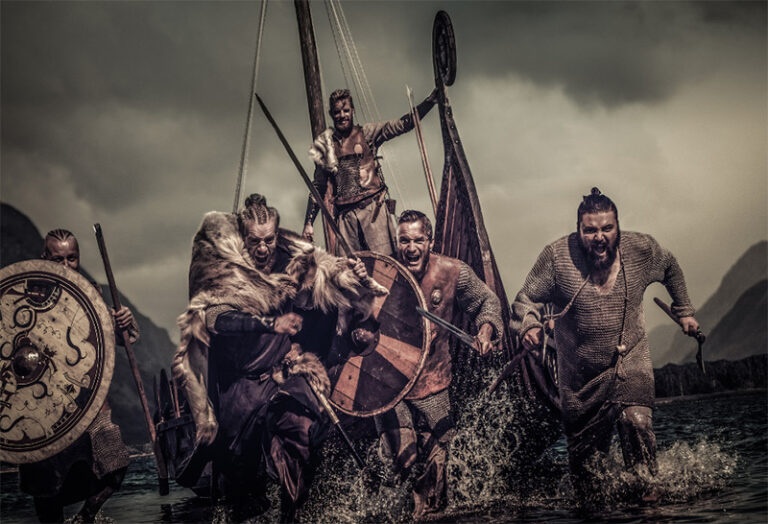
When it comes to the history of Norway and Scandinavia, few times are more iconic than the Viking Age. The fascination with this time in history continues at pace, and its cultural legacy lives on.
Table of Contents
A Viking history lesson
One of the most popular parts on Life in Norway in our Viking blog. Each time we publish a new article, emails with questions come flooding in. Many of these are from students doing assignments on the era.
Last year we published a timeline to help piece together the story of what happened and when. But now we're taking things a step further and diving into the details! Ready to learn more? Let's get going.
First things first, how do we know so much about the Vikings? It's for the same reason we know so little! Very little archaeological evidence remains from the era. That's why the recent discoveries of Viking ship burial sites are so important.
Aside from these sites and the burial mounds, rune stones are some of the few remains we have to study.
However, many of the stories were passed down orally over the years. While they are sure to have been twisted and misinterpreted to a certain extent, Icelandic scholars wrote them down a few hundred years later.
The combination of these stories with archaeological evidence gives us an insight into the history. To learn more about the sagas themselves, visit the Saga Museum in Reykjavik, Iceland.
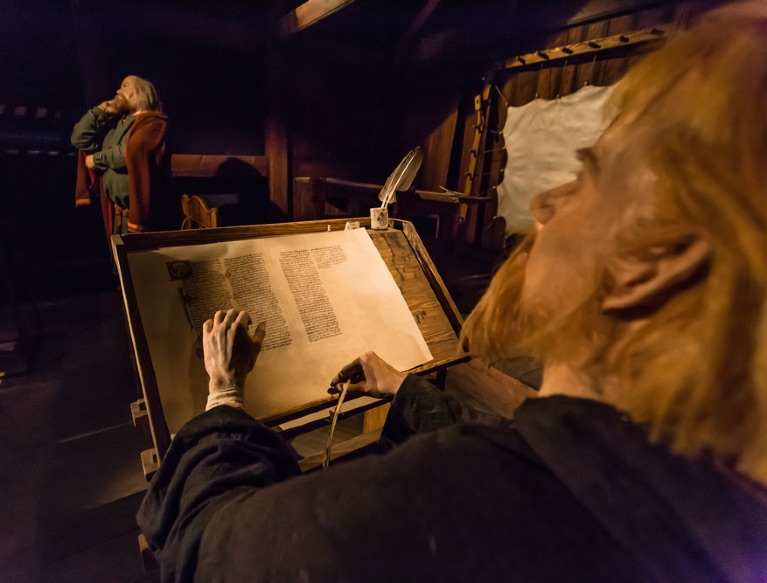
The museum covers much more than the Viking era: “At the museum you will find many of the legends from the Icelandic sagas, historical figures like Snorri Sturlusson, Ingolfur Arnarson and Leifur Eiriksson.
Learn about the disastrous Black death, the most devastating pandemics in human history, which claimed anything between 75 to 200 million people.”
Who were the Viking people?
The Vikings came from what is now known as Scandinavia: Denmark, Norway and Sweden. However, they were not one “race” as such, rather small groups from all over the region. Also, Vikings weren't just limited to Scandinavia. Historical records indicate Finnish, Estonian and Saami Vikings as well.
Aside from occasional trade they had very little to do with one another, and in fact often fought amongst themselves. That being said, the Viking were united as a group in one circumstance: the eyes of the conquered! They came from foreign lands, were seen as uncivilised, and were not Christians. That would come later, of course!
Viking history tends to focus on the warriors, typically men. Much has been written lately about the role of women in the Viking age. You can read our own summary of the findings here.
Relatively few Norsemen actually set sail on raids and trade missions in the early years. At least, until settlements were founded elsewhere. Instead, many worked out their lives as farmers or fishermen.
Viking settlements in Norway and Scandinavia
Throughout Scandinavia, settlements were typically small farming communities home to just one or a handful of families. Power was far from centralised, relying instead on a local chieftain and the alliances he would make along the coastline.
Lofor Viking museum on Norway's Lofoten Islands has a lot of great information about the role of a chieftain. The museum goes on to say that the chieftain would have to be generous with his wealth in order to gain support.
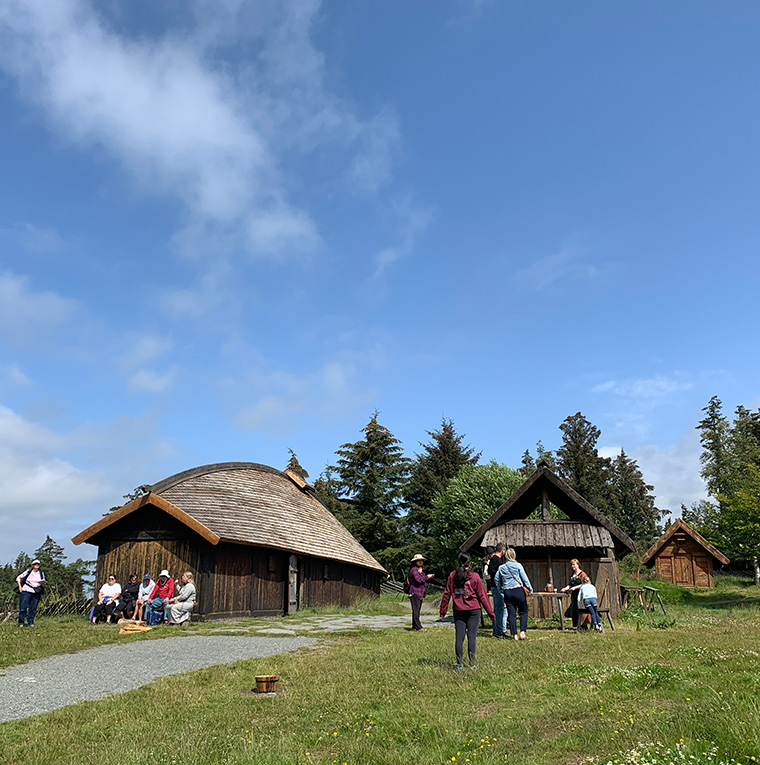
“We can assume that society was organised in a kind of redistribution system. This would involve the chieftain collecting taxes from the people in exchange for protection, the development of infrastructure and the organisation of other common business. In this way, the chieftain developed his power, alliances and wealth.”
Viking families lived in longhouses, a building split into sections with a fire at its heart. Benches surrounding the fire would serve dual purpose as daytime seating and nighttime beds. Typically, the building would be shared with livestock and used to store all manner of goods.
Some of the best known settlements in Norway include Borg, home to the Lofotr museum, and Avaldsnes. The latter, near Haugesund, was on a strategically important shipping route. The Avaldsnes Viking Village is well worth a visit.
Meanwhile, Denmark's Ribe is the oldest extant town in all of Scandinavia. Founded in the first decade of the eighth century, Ribe flourished as a trading centre.
The beginnings of the Viking Age
One of the most common questions I receive is why did the Viking Age begin? No-one is entirely sure, but it was clearly a transition.
In the 7th and 8th centuries, Europe was growing wealthier. Scandinavian furs were prized items and it's believed this early trade taught the pre-Viking people about sailing technology and the politics (and weak points) of Europe.
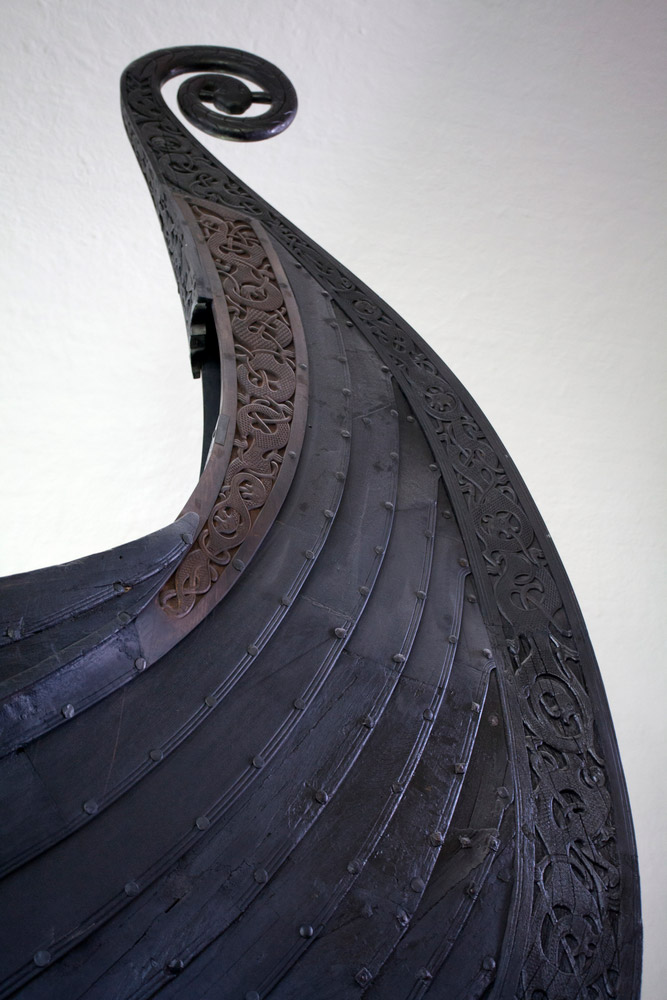
There is pre-Viking evidence of trade between parts of Scandinavia, too. In fact, recent research shows that whetstones found in Ribe came from the Lade peninsula in Trondheim.
Some believe overpopulation caused the Vikings to begin their travels. But that seems unlikely because the early raids were for riches, not land. Norsemen always had an important relationship with the water for food and transport. The development of faster, more reliable ships seems to have played at least a part in triggering the expansion overseas.
This is one of the factors that makes recent archaeological discoveries of ships so fascinating. On that topic, Knut Paasche from the Norwegian Institute for Cultural Research joined me on a recent episode of the Life in Norway Show.
He explained that a new digital model of the Tune ship revealed new learning about its likely function. It now seems likely the vessel could have crossed the North Sea powered by a sail large enough to make it the fastest Viking ship ever discovered.
The Lindisfarne raid
For any student of history, the name Lindisfarne conjures up images of the Viking raid in 793.
While it seems unlikely to be the the very first, it was documented in the Anglo-Saxon Chronicle, personal letters and the famous Doomsday Stone. As they're the first written sources referencing a raid, it's typically taken to be the beginning of the era.
It was the first of many attacks on monasteries along the British coastline. The Norsemen quickly identified these buildings as sources of wealth with weak defences, making them very attractive targets.
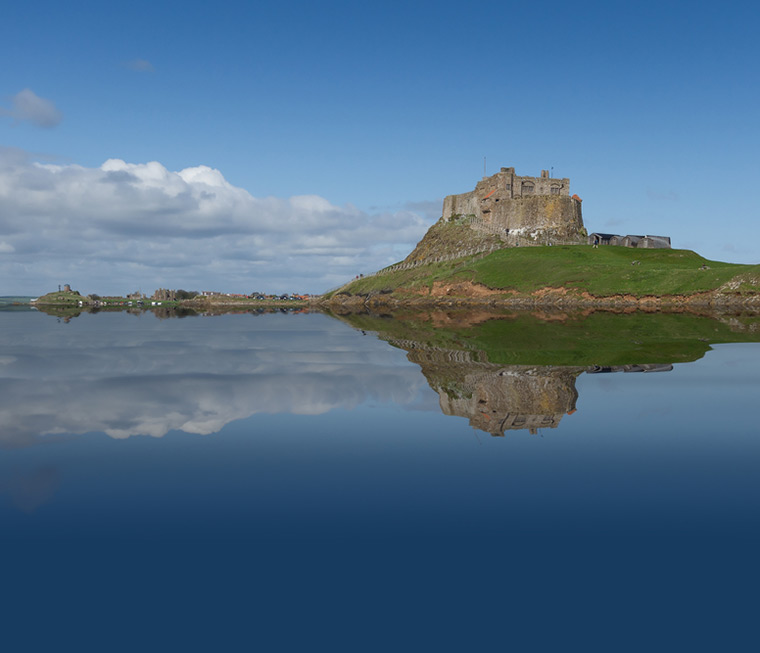
Despite the written sources, archaeological evidence for the raid has been thin. The exact location of the original wooden monastery isn’t known. The visible ruins on Lindisfarne today are from a later priory. However, archaeologists recently discovered a board game piece preserved in a ditch.
Experts believe it could be from a variant of the Viking board game hnefatafl, also known as the King’s Table. Bearing similarities to chess, the strategic board game simulates a Viking raid. It's hard not to imagine the warriors playing the game during their days at sea.
Archaeologists don't know if the piece was dropped by a Viking raider or owned by a local. But they can draw some conclusions based on its high quality and the dating of the ditch to around the time of the raid.
Other early raids
Buoyed by this early success at Lindisfarne, Viking raids became more numerous. Just two years later, they struck undefended island monasteries in the Hebrides and northern Ireland.
Four more years on, and continental Europe was hit. The island monastery of St Philibert’s on Noirmoutier, near the estuary of the Loire River, was targeted in 799.
Despite this, it was the British Isles that remained target number one for Viking raids for many years. It wasn't for another 40 years or so that attacks in continental Europe became commonplace. They achieved this in part by taking advantage of internal conflicts in Francia.
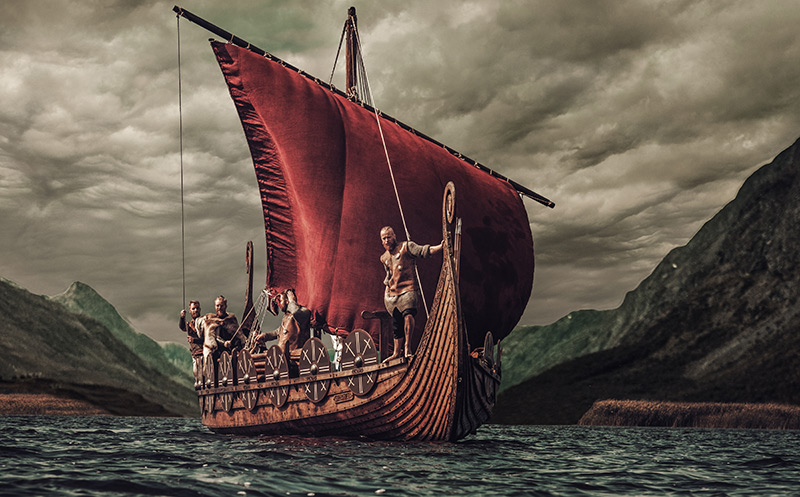
So much so, following the death of an emperor of Francia, one of his sons invited the support of a Viking fleet in a power struggle with his brothers.
An expansion into Britain
After a period of prosperity for the Vikings in West Francia, King Charles the Bald began increasing his defences. As towns, abbeys and rivers were fortified from around 862, the Vikings—principally from Denmark—turned their attention back to the British Isles.
Three Icelandic sagas tell of an army that invaded England in 866, led by the sons of Ragnar Lodbrok. They wanted to take revenge against King Ælla of Northumbria who is said to have captured and executed Ragnar. Thanks in part to the recent TV series, Ragnar Lodbrok is one of the most famous Viking figures.
However, many historians consider the stories and even his very existence dubious. Some think Ragnar is actually an amalgamation of several people.
As raids became more numerous, Vikings started to create settlements. They gained control of many Scottish islands including Shetland, Orkney and the Hebrides, along with parts of the mainland.
Ireland saw the founding of trading towns including Dublin, Waterford and Limerick. From these bases, the Norsemen launched attacks elsewhere in Ireland and across the Irish Sea to England.
The establishment of ‘Danelaw'
The attacks on England were so numerous that only kingdom was able to resist. Aside from Wessex, much of England fell.
In 871, King Alfred the Great of Wessex became the only king to record a decisive victory against a Danish Viking army in England. After this, the Danes settled north of Wessex in an area that became known as Danelaw.
This period saw the establishment of many trading cities that still exist today. The best known, York, is now home to a comprehensive Viking museum. This dominance would last for around 50 years, until English armies began to take back control.
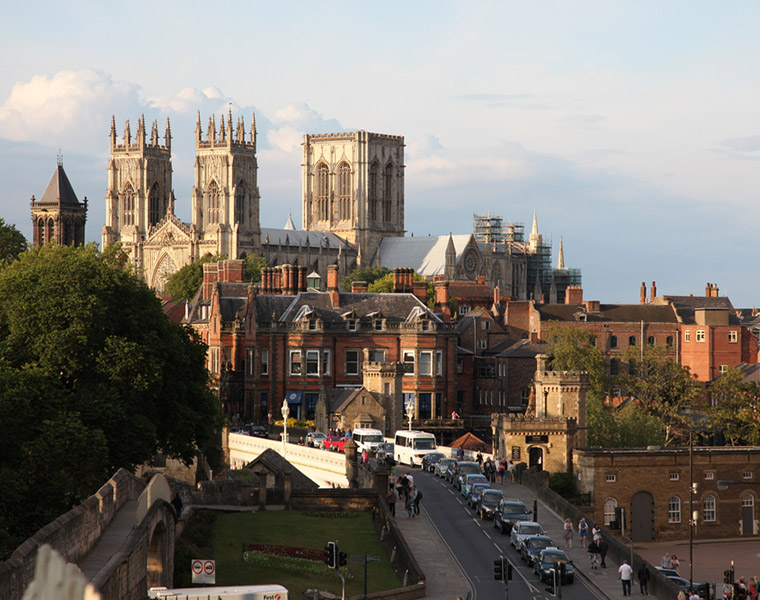
The descendants of Alfred of Wessex led the charge, eventually killing the last Dane leader—Erik Bloodaxe—around the year 952.
Expansion into Europe and beyond
While Danes were in power and then driven out of the British Isles, other Vikings remained active in Europe. Many towns suffered including Nantes on the French coast and towns further inland. Vikings stormed the Arab-controlled Seville and Italy's Pisa as they spread ever further.
In 911, the king in West Francia granted the Viking chief Rollo a substantial territory for preventing other raiders accessing the Seine. The legacy of this treaty lives on today with the region's modern name Normandy, which means ‘land of the Northmen'.
Norwegian Vikings also began to colonise Iceland and then moved on to Greenland. Icelandic sagas tell us that those early Greenland settlers, led by Leif Erikson, may have become the first Europeans to discover North America.
They built a temporary settlement Vinland, in what is now L’Anse aux Meadows in Newfoundland. Archaeological evidence found in the 1960s confirmed this. However, it remains the only confirmed Norse site in or near North America, aside from Greenland.
Danish dominance as Christianity spreads
Christianity's introduction to Scandinavia was slow and steady rather than an overnight occurrence. One of the key figures behind this change was the Danish King Harald Bluetooth, who reigned (we believe) from 958-986.
The exact circumstances surrounding his own conversion are unclear, but what is clear is his substantial public works within Denmark.
During his reign, Harald oversaw the reconstruction of the Jelling runic stones, and fortifying the fortress of Aros, now known as Aarhus. He also built five ring forts in strategic locations. Most historians believe these projects were about consolidating economic and military control.
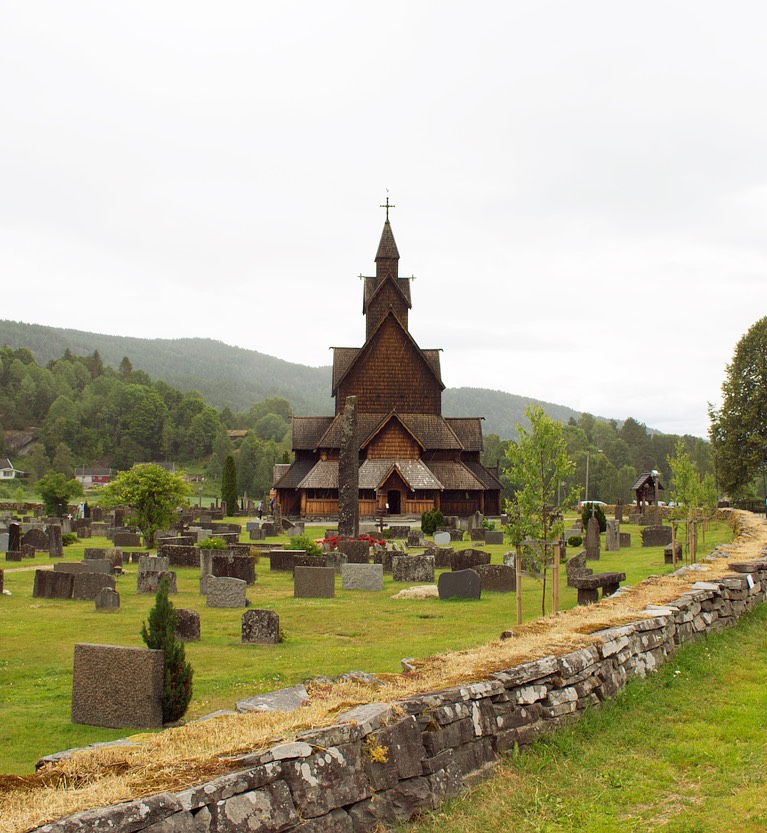
After this, Bluetooth's eye was drawn across the seas once again. And so, a second wave of Viking activity began. Raids bigger than ever before targeted the faltering England.
Over the course of 20 years, Harald’s son Sven Forkbeard had conquered the kingdom by 1013. His son Knut then ruled a Scandinavian empire including Denmark, Norway, England and of course, the North Sea.
Back in Norway, King Haakon the Good attempted to spread Christianity after his upbringing in England. However, his efforts were met with resistance. The subsequent King Harald Greycloak made his mark by destroying pagan temples, but also had little success in introducing the new faith.
Things began to change during the short reign of Olav Tryggvason. His aggressive conversion strategy (more burning of pagan temples and killing of resisters) was more effective and succeeded in making the country Christian, at least in name. Following Tryggvason's death in 1000, Norway did revert back for a short time, but that didn't last long.
King Olav Haraldsson came to power in 1015 and was a big proponent of the new faith. After his death, Olav Haraldsson became Saint Olav, an act that sealed the dominance of Christianity in Norway.
The end of the Viking Age
The end of the Viking Age was one of slow decline rather than a sudden stop. At Borg in Lofoten, the Chieftain’s house was abandoned during a time of upheaval in the 900s. As Norway became one nation and Christianity spread, power structures changed. Several great chieftains relocated in Iceland during the time.
The North American settlement was abandoned in the early 11th century. This was most likely due to the long distance required for trade with Scandinavia. In 1030, Norway's Christian King Olav Haraldsson was defeated in the Battle of Stiklestad.
A real-life “game of thrones” took place involving a failed invasion from Norway's Harald Hardråde. Eventually, William, Duke of Normandy, took England's throne. He managed to retain the crown in spite of further Danish challenges. The slight irony here is that William was a descendant of Scandinavian settlers in northern France!
The Viking legacy around the world
Of course, these stories have left a significant legacy not just in Scandinavia, but all over the world. There's TV shows and Viking movies, sports teams and other clubs and associations all with Viking names. The Danish city of Aarhus even uses little Viking characters on its pedestrian crossing lights!
In fact, it could be argued that interest in the time of the travelling Norsemen has never been higher. Some of the tourism to Norway and Denmark is courtesy of the shared history. You can visit Viking farms, burial mounds, a ship museum and even the remains of the ring forts.
Did you enjoy this complete history of the Vikings? If so, that's great! Why not share it on Pinterest so others can find it? Hit that Pinterest sharing button for the perfect pin.

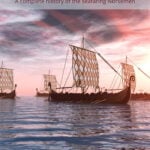

I love the history I have learned and hope to keel learning….THANK YOU
Complete. Alright. Interesting article read.
Black vikings? Who was the first viking king?
Hello. I have a question who were first vikings or varangians? I think before sailing via ocean they should learn sailing via rivers. It says that varangians were first…
Varangians were the elite guard & soldiers of the Byzantine emperor. They were not only Vikings and were founded in the 10th century. Vikings started raiding in the 8th century.
So obviously it was the Vikings.
L’Anse aux meadows in Newfoundland is not Vinland. It was probably just a base from which the first Norse settlers explored the land they had recently discovered. The L’Anse aux Meadows site was originally discovered by Helge Ingstad and his archeaological wife Anne Stine. They have never claimed to have found the Vinland of the sagas. Also, Leifur Erikson was not the first to see the East Coast of North America. That was Bjarni Herjolfson, who was blown off course by a storm when travelling from Iceland to Greenland and told Erikson about the well-wooded lands he had seen West of Greenland. (There are no trees on Greenland) Leifur Erikson set out to get some wood for ship-building and repair. The first man to lead an expedition to settle on the newly discovered Vinland was the Icelander Thofinn Karlsefni. I suggest you read the book “WestViking” by the Canadian author Farley Mowat. [I have an old, battered copy for sale (£1.00+ postage) to the first person to email me for it.]
7-19-2021 Mr. Daniels – If above referenced copy of ‘WestViking’ by Mowat still available, please advise, including cost (in US dollars), for postage, handling, etc. Will forward prepayment via VISA, or Mastercard, your choice. Thanks. William L. Larson, St. Paul, MN USA (email: [email protected])
Hello, can you help me with more info or link where to read about the Rus vikings? Thx.
well…they were all one *race* from the Scandinavian region and indigenous to that region, though they were not all of the same sub-region, and they weren’t all of one tribe, clan, or geo-political entity as we recognize them today.
Awesome u draw me back in the age of Viking ….sometimes I feel this ain’t my generation……love the Viking world
The vikings did not
do Germany. Answering this would help us understand why England, Ireland and France were attacked. Ireland had many interlocking separate kingdoms. The invasion was marginalised to a few city states which became critical for trading all around. Their boating and shipping processes appear to underpin so much in the Viking era. They could get around because they had good boats and had multiple invasion sites and ports that became settlements for extended raids that transmorgified into trades. But the Vikings never got settled inland in Ireland. Then they got their heads around motte and bailey but by then they were Normans. But the real Vikings were marginalised to Oxmanstown in Dublin as the Normans (Vikings who spoke French) took over. They became history. How in history did the Normans turn into English. So that the English could take the blame? And the Normans today are they really gone?
The Norman’s from Normandy, France, under William the Conqueror, Conquerord the English leader because he and his Army were exhausted from fighting off the ,” Heathen Army” – Danes? up in Yorkshire. Then these Norse, French speaker ingredients invaders kept their French language for a lifetime or so. Their descendants then with French and perhaps English understanding, we’re the ” Ruling Class” of Britain down to Queen Elizabeth 2nd and now King Charles 3rd.
What are the most important facts in this article?
Oh, if only doing homework were that easy.
I grew up in MN, and 100% Scandinavian. 49% Norwegian, 23% Danish, 23% Swedish, 2% Icelandic, and 2% Rus. I’m 81, and visited Norway and Denmark in 1980. I spent two weeks visiting Norwegian relatives.
My name is in a Norwegian History Book.